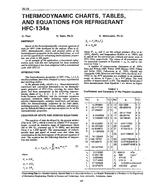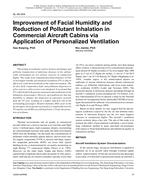Track: Fundamentals and Applications
Sponsor: 2.8 Building Environmental Impacts and Sustainability
Chair: Charles Eley, P.E., Member, Eley Consulting, San Francisco, CA
K-12 schools are leading the way for zero energy. As the next in the series of the popular Advanced Energy Design Guides, this zero energy guide focuses on what is needed to achieve zero energy in K-12 schools. The session focuses on the simulation models; EUI targets; lighting and HVAC design, on-site renewable energy needs; as well as looking at processes to ensure success in meeting the zero target. How-to tips and practical advice are presented as well as successful zero energy case studies.
1. The Process of Creating Zero Energy Design Guidance: The Next in the Series
Paul Torcellini, Ph.D., P.E., Member, NREL, Golden, CO
ASHRAE in conjunction with AIA, IES, USGBC and USDOE have created the next series of Advanced Energy Design Guides. The first in this series is the zero energy design guidance for K-12 schools. This presentation focuses on the process to create the guide, energy use intensity targets and the analysis to achieve them, plug loads and on-site renewable energy.
2. The Owners Perspective: Making Zero Energy Happen
John Chadwick, AIA, Arlington Public Schools, Arlington, VA
Arlington County Public Schools set out to build a new elementary school with a passion to be a leader. They hired an effective design team and set out on a path to create a zero energy school within the existing budget. This presentation focuses on the effective goal setting, the communications required and the coordination needed to achieve zero energy. This building’s owner’s perspective provides important insights to the future of buildings.
3. Lighting Design Parameters for Successful Zero Energy Schools
Shanna Olson, IMEG Corp., Chicago, IL
Lighting is a critical piece of designing zero energy buildings. In addition, lighting technologies are changing dramatically with almost 100 percent of new efficient lighting being LED. This presentation examines the interactions with daylighting, effective lighting layout and control strategies. In addition, lighting power targets are provided to help appropriately design HVAC systems.
4. Making It All Work: Important Aspects of HVAC Zero Energy Design
Daniel Nall, P.E., HBDP, CPMP and BEMP, Fellow Life Member, Syska Hennessy, New York, NY
HVAC systems bring all the pieces together in creating a zero energy school. The results of effective envelope, lighting and plug loads all come together in the selection of HVAC system type and its configuration. Proper sizing, as well as sequence of operations, are critical for success in delivering a school that meets its EUI target which on-site renewable energy can meet. This presentation also covers thermal mass and the benefits of load diversity on the HVAC system. It also provides some unique insights on working with HVAC systems in zero energy schools.
Presented: Tuesday, January 23, 2018, 1:30 PM-3:00 PM
Run Time: 90 min.
This is a zip file that consists of PowerPoint slides synchronized with the audio-recording of the speaker (recorded presentation), PDF files of the slides, and audio only (mp3) for each presentation.
Citation: ASHRAE Seminar Recordings, 2018 Winter Conference, Chicago, IL
Product Details
- Published:
- 2018
- Units of Measure:
- Dual
- File Size:
- 1 file , 100 MB
- Product Code(s):
- D-CH18Sem49


